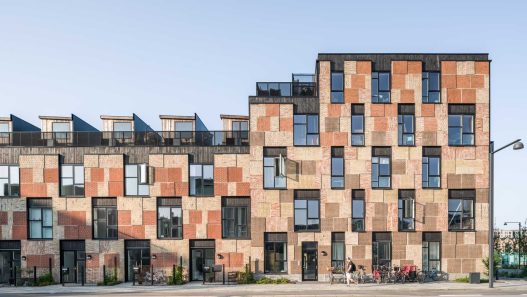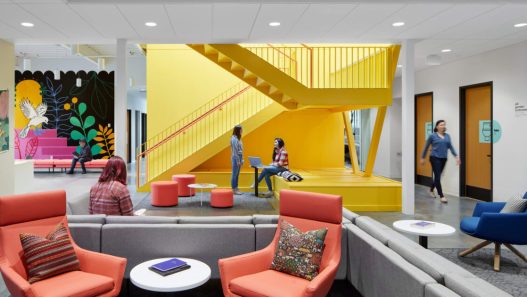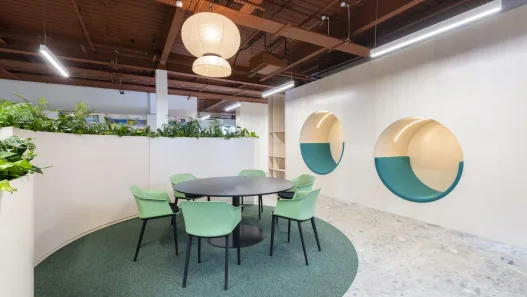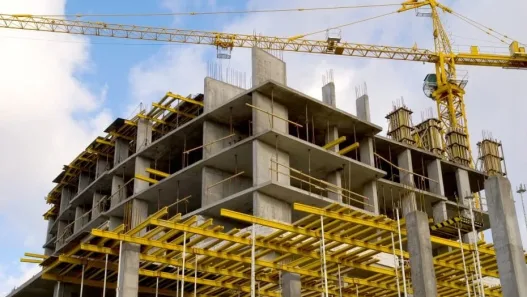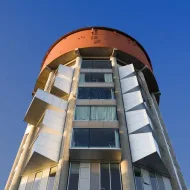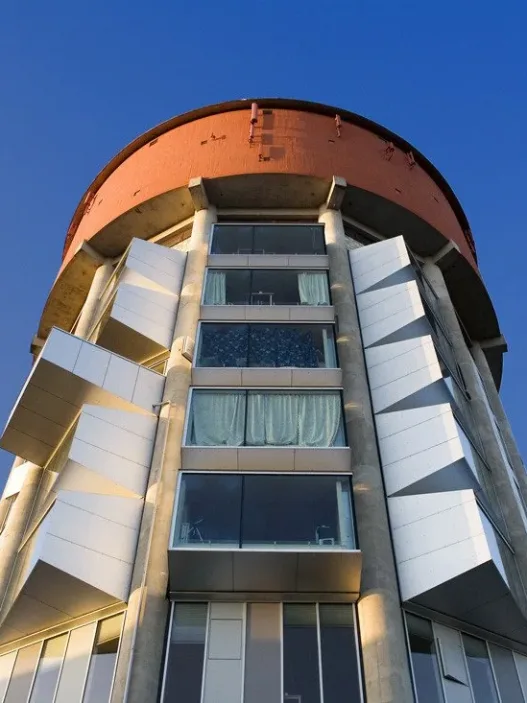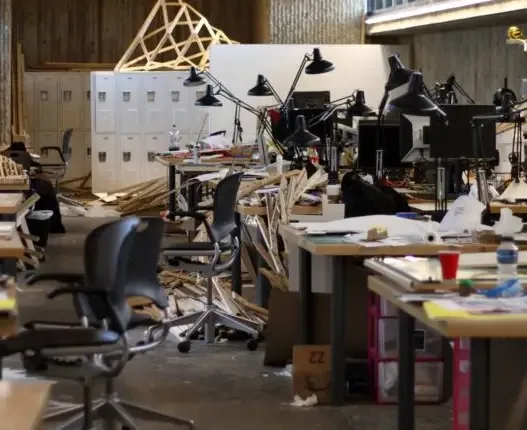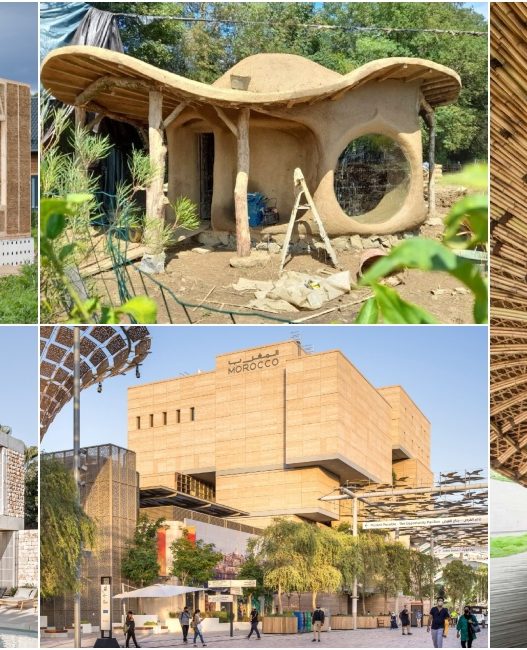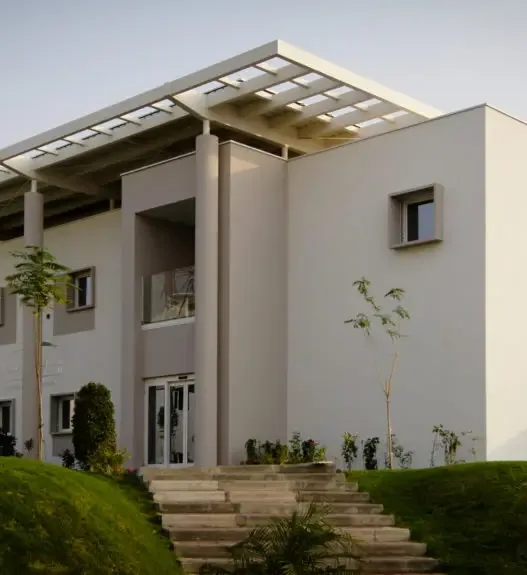In an increasingly aware world of environmental problems, sustainable materials have emerged as a vital component in architecture and construction. These materials not only serve the creation of buildings, but also play an important role in minimizing ecological footprints and improving the overall health of our planet. As we explore the concept of sustainable materials, we will examine its definitions, importance, historical development, current trends and emergency issues with construction waste.
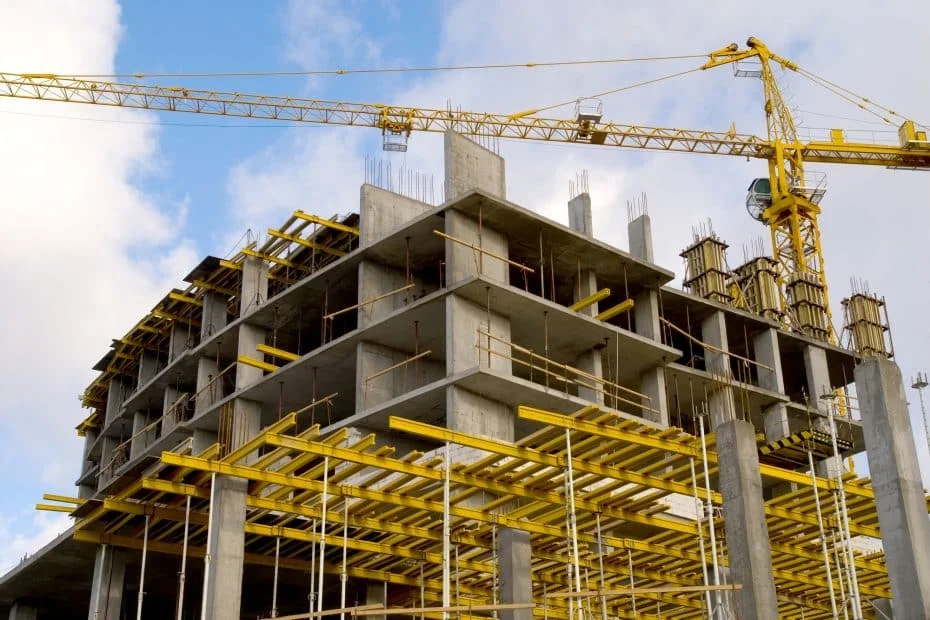
Definition of Sustainable Materials
Sustainable materials are materials that are supplied, manufactured and used in a way that minimizes negative impacts on the environment. This includes materials with renewable, recycled or lower carbon footprint compared to traditional options. Bamboo, for example, is often shown as a sustainable material due to its rapid growth and rapid regeneration ability, making it a renewable resource. Similarly, recycled steel and recycled wood are popular options as they reduce the need for new raw materials and reduce waste.
This definition only goes beyond materials and covers the entire life cycle of a product. This means taking into account how the materials are removed, processed, and eventually disposed of or reused. Sustainable materials are an integral part of achieving a more cyclic economy where waste is minimized and resources are used efficiently.
Its importance in modern architecture
The importance of sustainable materials in modern architecture is undeniable. The use of sustainable materials is a fundamental step towards reducing these effects, as the construction sector contributes significantly to greenhouse gas emissions and resources depletion. The fact that buildings are responsible for a significant part of energy consumption and environmental degradation requires us to rethink how we build and what we use.
The use of sustainable materials not only helps to reduce carbon footprints, but also improves the health and well-being of the residents. Many sustainable materials, such as paints and coatings containing low VOC (volatile organic compound), contribute to better indoor air quality. In addition, they often increase energy efficiency; For example, materials with good insulation properties can significantly reduce the demand for heating and cooling, leading to a reduction in energy costs and environmental impact.
Historical context
The concept of using sustainable materials is not a new idea; Its roots go back to ancient architecture. Civilizations such as the Greeks and Romans used locally sourced materials that were abundant and had low impact. For example, adobe and stone were common in many ancient structures, reflecting a natural harmony with the environment and existing resources.
However, the Industrial Revolution marked a significant change. The rise of mass production and synthetic materials often prioritized convenience and cost over sustainability. By the end of the 20th century, architects and builders began to reevaluate their choices, influenced by the increasing need for environmental awareness and sustainable development. 1990The emergence of the green building movement in
Current trends in sustainable construction
Today, the sustainable construction area has a vibrant and dynamic structure shaped by innovative applications and technologies. One of the most notable trends is the rise of biophilic design, which integrates natural elements into buildings. This approach not only improves aesthetics, but also promotes the well-being of the inhabitants through greater access to natural light and greenery.
Another trend is cross-laminated wood (CLT) and insulated concrete forms that offer both structural benefits and sustainability (ICF)are the use of advanced materials such as In addition, 3D printing technology creates waves in the construction industry by enabling the use of recycled materials and significantly reducing waste.
In addition, passive design strategies in which buildings are designed to maximize natural heating, cooling and lighting are also of interest. This method reduces the dependence on mechanical systems, leading to lower energy consumption. Focusing on lifecycle assessment (LCA), which assesses the environmental impacts of materials throughout their lifetime, is also becoming widespread.
Overview of construction waste issues
Construction waste is one of the major challenges facing the industry today. It is estimated that construction and demolition activities produce millions of tons of waste each year, and most of these wastes end in landfills. Common materials such as concrete, wood and drywall contribute to these wastes to a great extent, often due to poor planning, excessive use of materials and inadequate recycling methods.
Handling construction waste is crucial for sustainable development. Many architects and builders now adopt strategies such as modular structures that allow prefabrication and reduce material waste in the field. In addition, the implementation of recycling programs and the supply of materials from recycled or recycled sources can also significantly reduce waste.
In summary, the transition to sustainable materials in architecture is not just a trend; It is a necessary evolution driven by our collective responsibility to protect the environment. By understanding the definitions of sustainable materials, their importance, historical context, current trends and waste issues, we can appreciate their vital role in shaping a more sustainable future for construction and architecture.
Sustainable material types
Sustainable materials are indispensable for modern architecture and construction, which promotes environmental health and reduces our carbon footprint. As global awareness of ecological problems increases, architects and builders are increasingly turning to sustainable options that not only meet functional needs, but also positively contribute to the planet. Let’s examine the various types of sustainable materials, each offering unique benefits and applications.
recycled materials
Recycled materials are an innovative solution in sustainable architecture and allow us to turn waste into valuable building resources. By converting discarded materials such as glass, metal and plastic into new products, we reduce the demand for unprocessed resources and contributions to the landfills. This process not only saves energy, but also minimizes the pollution associated with the production of new materials.
In the real world, many buildings are now being built using reclaimed bricks and tiles that give character and history to new structures. For example, New YorkTaki High Line shows how urban areas can thrive while honoring their backgrounds by creatively integrating recycled materials. In addition, the use of recycled steel in the framing of buildings increases their durability and structural integrity, while also making them environmentally friendly.
Locally sourced materials
The use of locally sourced materials is another cornerstone of sustainable architecture. This approach greatly reduces transportation emissions, supports local economies and often ensures that materials are suitable for local climate and environment. When materials are supplied from nearby areas, architects can also include traditional building techniques that reflect local culture and history.
For example, JapanMany houses in rural areas of the city are built using local timber; This both adapts to the natural landscape and encourages sustainable forestry practices. Architects can create structures that are not only environmentally friendly, but also deeply rooted in their geographical context, choosing materials such as stones, clay or wood, which are abundant in the region.
Biodegradable materials
Biodegradable materials attract attention in sustainable architecture as they can naturally break down at the end of their life cycles and minimize waste and pollution. These materials are usually obtained from natural sources such as plant fibers or animal products and can be designed to decompose without releasing harmful substances to the environment.
A notable application is that the mycelium, which is the root structure of fungi, can be grown as both light and strong building blocks. Such innovative materials not only offer a sustainable alternative, but also promote a cyclical economy in which materials enrich it instead of contributing to the deterioration of the soil.
Designed wooden products
Wooden products designed such as cross laminated timber (CLT) and laminated timber (LVL) represent a significant progress in sustainable building materials. These products are created by connecting the layers of wood to each other, and stronger and stronger materials are obtained from the traditional timber. This process ensures efficient use of wood resources and often uses smaller trees that will not be used otherwise.
Use of engineering wood, one of the world’s tallest wooden buildings in CanadaIt has been accepted in landmark projects such as Brock Commons Tallwood House. By using processed wood, architects can obtain tall structures with less carbon footprints and also provide warm, inviting interiors that improve the life experience.
green concrete
Green concrete is an innovative material that aims to reduce the environmental impacts of conventional concrete. Traditional concrete production is energy-intensive and releases a significant amount of carbon dioxide. In contrast, green concrete contains recycled materials such as fly ash or slag and uses less water and energy in its production.
Real-world applications of green concrete help to create stunning, sustainable structures that use the natural environment seamlessly to adapt to the natural environment.It can be seen in projects such as the Eden project. By continuing to develop and adopt green concrete applications, the construction sector can significantly reduce carbon emissions while maintaining the known durability and strength of concrete.
As a result, the discovery of sustainable materials in architecture is not only about reducing harm, but also about increasing the beauty and functionality of our built environment. Architects can adopt recycled, locally sourced, biodegradable, engineered wood and green concrete materials, creating structures that are not only efficient and durable, but also compatible with nature. As designers and builders continue to innovate, sustainable architectural possibilities will expand and pave the way for a greener future.
Benefits of Sustainable Material Use
Discussions in architecture and construction have evolved significantly over the years, with a strong focus on sustainability. Using sustainable materials is not just a trend; It is a vital strategy to reduce our environmental footprint and create healthier living and working areas. Sustainable materials are materials that are supplied, manufactured and disposed of in a way that minimizes environmental damage while promoting resources conservation. Let’s examine the many benefits of transitioning to these materials.
Reducing environmental impact
One of the most convincing reasons for using sustainable materials in architecture is the significant reduction of environmental impact. Traditional construction materials are often obtained from non-renewable resources and require energy-intensive processes, contributing to pollution and habitat destruction. In contrast, sustainable materials are usually obtained from renewable sources such as bamboo or reclaimed wood, which minimizes deforestation and reduces carbon emissions.
For example, using recycled steel not only protects raw materials, but also significantly less energy than producing new steel. This change helps to reduce greenhouse gas emissions and reduces the overall carbon footprint of a building. Architects and builders can play an important role in maintaining ecosystems and promoting biodiversity by opting for sustainable harvested or recycled materials.
Long-term cost efficiency
While the initial cost of sustainable materials is sometimes higher, its long-term financial benefits are generally significant. Sustainable materials tend to be more durable and require less maintenance, which can save significant savings throughout the life of a building. For example, materials such as fiber cement siding or metal roofing can last much longer and reduce replacement costs than conventional wood exterior cladding or asphalt tiles.
In addition, buildings built with sustainable materials often have better energy efficiency due to advanced insulation and reduced energy consumption. This means lower electricity bills for building residents, making these buildings more economical over time. In addition, many governments and organizations further balance initial costs by offering incentives or tax returns for sustainable construction.
Improved aesthetic and design
Sustainable materials can also increase the aesthetic appeal of a structure. Many sustainable materials offer unique textures, colors and surfaces that can improve the overall design of a building. For example, reclaimed wood gives a rustic charm and character that new materials often do not have. Similarly, natural stone is environmentally friendly and can provide timeless elegance.
Architects are increasingly using innovative sustainable materials to create stunning designs that are environmentally friendly. These materials can help establish a harmonious balance between functionality and beauty, and often result in areas that feel more inviting and connected with nature. The inclusion of biophilic design principles, which emphasizes the connection between nature and interiors, can lead to environments that are not only visually pleasant, but also psychologically beneficial to the residents of the building.
Improved indoor air quality
Indoor air quality is a critical element that affects the health and well-being of the residents. Traditional materials such as paints, adhesives and polishes, volatile organic compounds (VOC) and other harmful chemicals, which can lead to bad air quality. Sustainable materials usually have lower VOC levels, making them a healthier choice for indoors.
For example, low VOC paints and varnishes and formaldehyde-free cabinets contribute to a cleaner and safer indoor atmosphere. This is especially important in residences, schools and health facilities, where residents can spend a long time indoors. Improved indoor air quality can not only increase comfort, but also reduce the risk of respiratory problems and other health problems, providing better productivity and overall health.
Contribution to LEED certification
The Leadership in Energy and Environmental Design (LEED) Certificate is a globally recognized symbol of sustainability success. Buildings using sustainable materials can earn points for LEED certification and show their commitment to environmental responsibility. This certificate not only increases the marketability of a building, but also attracts environmentally friendly tenants and buyers.
For example, the use of sustainable sourced wood or recycled materials can contribute significantly to a project’s LEED scores. Since LEED-certified buildings often have less energy and water use, this recognition can result in an increase in property values and lower operating costs. In addition, the LEED certificate opens the door to various financing opportunities and incentives, making sustainable materials not only an ethical choice, but also a financially savvy choice.
As a result, the benefits of using sustainable materials in architecture go far beyond only environmental concerns. They provide long-term cost savings, enhanced aesthetics, improved indoor air quality and contribute to important certifications such as LEED. As we continue to face environmental challenges, adopting sustainable materials is not just a choice, but a healthier planet and a necessity for the future.
Successful application examples
It provides invaluable information on examining successful architectural projects, innovative design, sustainability and integrating nature with urban environments. These case studies show how visionary concepts can be implemented and set criteria for future developments. Each project reflects the importance of careful planning, community engagement and sustainability commitment.
Bullitt Center, Seattle
SeattleThe Bullitt Center is often referred to as ‘the greenest commercial building in the world’. Completed in 2013, the building embodies sustainable architectural principles with its innovative design and commitment to environmental management. The building takes a unique approach to energy and resource management by striving for the Living Building Challenge certification. This ambitious target is the Bullitt CenterIt means that it produces as much energy as it consumes on an annual basis.
The key to sustainability is an array of rooftop solar energy that powers the entire building and where rainwater is collected and filtered for use. The design reduces dependence on mechanical systems by promoting natural ventilation. The order inside promotes cooperation and creativity with open workspaces that promote the community among tenants. The Bullitt Center serves as a vibrant laboratory that inspires other projects around the world to adopt similar green practices and challenge the status quo of urban development.
Bosco Verticale, Milano
Bosco Verticalale or ‘Vertical Forest’, MilanIt is also a remarkable pair of residential towers that integrate nature into the texture of the city and redefine urban life. The project completed in 2014, 9,000more than 20,000 trees and 20,000With more than one plant, it creates a lush environment that reduces air pollution and increases biodiversity.
The towers, designed by architect Stefano Boeri, not only offer magnificent views to their residents, but also offer a unique life experience in which nature is at the forefront. The vegetation helps to insulate buildings, reducing the need for heating and cooling. In addition, the project promotes a healthier lifestyle by encouraging its residents to connect with nature every day. Bosco Verticalale is a powerful example of how urban design can harmonize with the natural world and inspires cities around the world about vertical gardens and green architecture.
Eden Project, Cornwall
CornwallLocated in an old clay quarry, the Eden project is a pioneering ecological complex that exhibits the beauty and diversity of plant life from all over the world. Opened in 2001, the project has biomes that contain thousands of plant species and emphasizes the importance of biodiversity and conservation.
The latest technology and sustainable applications are used in the project designed by Sir Nicholas Grimshaw. Geodesic domes, consisting of hexagonal and pentagonal ETFE panels, create different microclimates that allow the cultivation of tropical and Mediterranean plants. Beyond its aesthetic appeal, the Eden project serves as a training center that promotes environmental awareness and sustainability through workshops and exhibitions.
The Eden project has shown how architecture can influence communities and promote a deeper connection with nature by becoming a model for eco-tourism and a catalyst for local economic development.
Green building, New York
BrooklynThe Green Building is a brilliant example of adaptive reuse and sustainable architecture. Once a devastated warehouse, the building has been transformed into a modern event space that emphasizes environmental responsibility. In the building completed in 2009, energy-saving systems, water-saving technologies and sustainable materials were used.
Green BuildingThe design focuses on maximizing natural light and minimizing energy consumption. Its open layout and flexible spaces appeal to a variety of events, while displaying the beauty of recycled materials such as reused wood and recycled metals. This project not only revitalizes a historic building, but also sets a precedent for sustainable urban development and encourages other cities to think about how they can reuse existing buildings instead of demolishing them.
The Crystal, London
Londonin The Crystal is much more than a building; It is a sign of sustainability and innovation. Opened in 2012, this state-of-the-art facility serves as a center for discussions on sustainable urban living and smart city solutions. The structure itself is designed with sustainability in mind, with solar panels, green roof and rainwater collection systems.
Kristal emphasizes the importance of sustainable practices in city planning and hosts exhibitions and events that explore the future of cities. Its interactive screens include visitors in critical conversations about energy, transportation and social development. By exemplifying how architecture can be a powerful tool for education and advocacy, Crystal inspires individuals and policy makers to adopt sustainable practices in their societies.
These case studies highlight the potential of innovative architecture to address environmental challenges, improve quality of life and inspire future generations. Each project serves as proof of the transformative power of design when it is based on sustainability and community participation.
Difficulties in the adoption of sustainable materials
As the global community becomes more and more aware of environmental problems, the construction industry is under pressure to adopt sustainable practices. While the transition to sustainable materials is promising to reduce the ecological footprint of buildings, various challenges prevent their widespread adoption. Understanding these challenges is crucial to architects, builders and policy makers who aim to create a more sustainable built environment.
Higher startup costs
One of the most important obstacles to the adoption of sustainable materials is the initial costs, which are usually higher than traditional options. Sustainable materials such as bamboo, reclaimed wood and recycled metal may require more investment in advance. This cost difference is due to various factors, including the supply of these materials, the technology used in their production, and sometimes a limited market.
While these materials can provide long-term savings through reducing energy efficiency and maintenance costs, initial financial spending can deter developers and homeowners who focus on instant budgets. For example, a building built with sustainable materials may initially have a higher price tag, but savings in energy bills and reduced environmental impact can ultimately make a smart investment over time.
Education and awareness are essential to overcome this obstacle. Case studies highlighting successful projects using sustainable materials can encourage others to think about similar investments by showing long-term benefits.
Availability and supply issues
Procurement of sustainable materials can pose significant challenges. In many regions, these materials are not easily found, which causes logistical difficulties and increased transportation costs. For example, a builder in an urban area may find traditional concrete supplying easier than locally sourced hay bales or recycled products.
Moreover, the increasing demand for sustainable materials may be ahead of supply, especially for niche products. This scarcity can cause delays and prices to rise, making project timelines and budgets even more complicated.
The solution lies in building strong relationships with suppliers and investing in local economies. Architects and builders can help create a more robust market by forming partnerships with sustainable product manufacturers, making these materials more accessible and affordable over time.
Perceptions and misunderstandings
Perceptions about sustainable materials can significantly affect their adoption. Many people associate sustainable options with a lack of low quality or aesthetic appeal. This misconception can be caused by not being exposed to innovative designs that effectively use these materials.
Bamboo, for example, is often perceived as weak or unsuitable for structural applications, despite its strength and versatility. Similarly, recycled materials can be seen as less durable than their unprocessed counterparts.
In order to avoid these misconceptions, it is vital to exhibit successful projects that emphasize the beauty and functionality of sustainable materials. Interacting with society through workshops, exhibitions and training programs can help change perceptions by showing that sustainable materials can meet or exceed the performance of traditional options.
Regulatory and compatibility barriers
Navigating the legislative environment can be a daunting task for those who want to use sustainable materials. Building regulations and regulations may not always be suitable for new materials or innovative construction techniques. This lack of clear guidance can lead to uncertainty and hesitations among builders and architects who want to use sustainable options.
For example, some green building materials may not meet existing fire safety or structural standards, which prevents them from being approved for use in construction. Also, certification processes for sustainable products can be complex and time consuming, adding another layer of difficulty.
It is very important to advocate for updated regulations and policies that support the use of sustainable materials. Industry professionals can help shape a building regulation that promotes sustainability while providing security and compliance, cooperating with regulatory agencies.
Information gaps in the industry
The construction sector faces significant lack of information on sustainable materials and applications. Many architects and builders may lack the training or resources to fully understand the benefits and applications of these materials. This gap can lead to the miss opportunities to integrate sustainable applications into their projects.
Also, as sustainable materials and technologies continue to evolve, it can be difficult to learn about new developments. For example, innovations in bio-based materials or advances in recycling processes require continuous training and adaptation.
Sectoral training programs and training initiatives are vital to overcome this challenge. Professionals can equip themselves with the information needed to effectively implement sustainable solutions by investing in continuous learning. Partnerships with educational institutions can facilitate workshops and courses that focus on the latest trends and practices in sustainable architecture.
As a result, the adoption of sustainable materials in construction presents difficulties, but these obstacles can be overcome by commitment to education, cooperation and innovation. The sector can pave the way for a more sustainable future by addressing high costs, resource finding problems, misunderstandings, legislative barriers and information deficiencies.
Future orientations in sustainable materials
While our world is grappling with climate change and environmental degradation, sustainable materials in architecture and construction have become more important than ever. The future of these materials promises not only to reduce our ecological footprint, but also to create spaces that are compatible with their environment. This future-oriented discovery in sustainable materials will examine innovations, policy changes, the impact of technology, community participation and the visionary economy vision.
Innovations in Materials Science
Materials science is at the forefront of creating sustainable solutions for the built environment. Researchers and engineers are developing new materials that are not only eco-friendly, but also high-performance. For example, bio-based materials such as mycelium obtained from fungi are investigated for their lightness and insulation properties. These materials can be grown and harvested with minimal energy and offer a renewable alternative to traditional building materials.
Another exciting innovation is the use of recycled materials in construction. Companies are now turning waste products such as plastic, glass and even old tires into solid building materials. For example, recycled plastic bricks are used in various construction projects and reduce dependence on unprocessed materials when handling plastic waste. As these innovations continue to develop, we can expect to see a significant change in the way buildings are built, preferring materials that support sustainability in both production and life cycles.
policy and regulation changes
As awareness of environmental issues increases, so do policies and regulations regulating building materials. Governments around the world are starting to implement stricter standards for sustainability and are encouraging builders to adopt more environmentally friendly practices. The new regulations often promote transparency in the supply of materials and require lifecycle assessments to assess their environmental impact from the production of a material to its disposal.
For example, many countries adopt building regulations that require the use of sustainable materials or provide incentives for the use of low-carbon products. These legislative changes not only increase the demand for sustainable materials, but also create a competitive market for innovation. As the builders try to comply with these regulations, they will become more and more oriented towards advanced materials that are compatible with sustainability goals, which will lead to wider acceptance of environmentally friendly construction practices.
The Role of Technology in Sustainability
Technology plays a crucial role in the revolution of sustainable materials. Advances in production techniques such as 3D printing allow efficient use of materials and create complex designs that minimize waste. These technologies can produce components on site, reduce shipping emissions and material waste, and provide custom solutions that meet certain environmental standards.
In addition, digital tools such as Building Information Modeling (BIM) facilitate the planning and analysis of building projects, allowing architects and builders to evaluate the sustainability of different materials before construction begins. This data-oriented approach helps to make informed decisions that prioritize environmentally friendly options. As technology continues to advance, it will enable the development of even more innovative materials and construction methods and further increase the sustainability of the built environment.
Community Participation and Education
Community participation is of great importance in the adoption of sustainable materials. The inclusion of the local population in the design and construction process promotes a sense of ownership and responsibility towards the environment. Training initiatives can help communities understand the benefits of sustainable materials and encourage them to defend greener practices in local projects.
Workshops, public forums and collaborative design sessions can empower community members to discover sustainable options. For example, in urban areas, community-led startups have turned empty lands into green spaces using recycled materials and native plants. These projects not only beautify the neighborhoods, but also educate residents about sustainability, creating a surge effect that can affect wider community practices.
Cyclic economy vision in construction
The concept of cyclic economy reshapes our thinking about building materials. This approach highlights the idea of reuse and recycling of materials instead of following a linear take-up model. In the cyclic economy, buildings are designed with all life cycles in mind, allowing materials to be recovered, reused or re-functioned at the end of their service life.
This vision encourages innovation in material design and suppresses them for durable, easily disassembled and recyclable products. For example, companies are investigating the modular structure that can be easily adapted or expanded, minimizing waste and maximizing resource efficiency. As more architects and builders adopt this model, the sector can significantly reduce its environmental impact and promote a sustainable future for construction.
The future of sustainable materials is bright and full of potentials. Innovations in material science, supportive policy changes, technological advances, community participation and transition to a cyclic economy contribute to a more sustainable built environment. As these elements come together, we are approaching a future where our buildings not only serve their purposes, but also coexist in harmony with nature.



